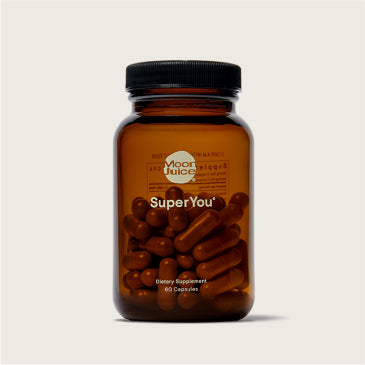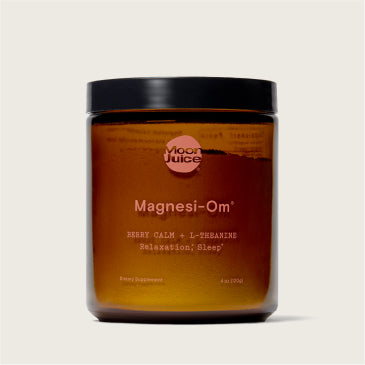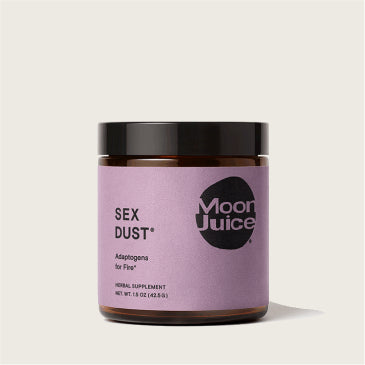Got skin goals? If you’re hoping to achieve a brighter, smoother, more radiant complexion, exfoliation is one of the most effective steps you can include in your routine. With countless proven and far-reaching benefits of exfoliating, it’s no surprise that there’s a massive market for exfoliating products and treatments. But which one should you choose?
From determining your skin type to targeting a specific skin concern, there are different exfoliating methods to choose from.
In this thorough guide to exfoliation, we’ll cover different types of exfoliation and specific exfoliants within each. Plus: helpful tips and FYIs to decide which type of exfoliation is best for you.
What Does Exfoliation Do?
There are plenty of beneficial skin care tips you can follow to make your skin look radiant, with one being regular exfoliation. But before deciding on an exfoliation method to use in your skin care routine, it helps to know what the role of an exfoliator is. Exfoliation is one of the best ways to increase your skin cell turnover rate. Skin cell turnover — i.e., the shedding of dead skin cells and replacing them with new, healthy ones — has a major influence on how fresh and luminous your complexion appears.
On average, this natural process occurs anywhere from 28 to 40 or even 56 days. Variations are attributed to factors like body parts — for instance, it’s a longer process for your face than it is for the skin on other parts of your body — as well as your diet, lifestyle considerations (think: stress levels and sleep quality), and overall health. Moreover, skin cell turnover slows down significantly over time, yet exfoliation can help speed things up.
Another key benefit of exfoliating is its power to help balance and clarify the complexion, namely for those who are oily and acne-prone. The accumulation of dead skin cells, excess sebum, and bacteria create the perfect storm to trigger breakouts.
Exfoliation not only helps sweep away this build-up through physical or chemical means, but also promotes a faster skin cell turnover rate with consistent use.
What Are the Different Types of Exfoliation?
The primary types of exfoliation are:
- Physical
- Chemical
- Enzymatic
Any given exfoliant may include one, two, or sometimes all three of these different types. Each has its perks, the best type of exfoliation will ultimately hinge upon your skin concerns and goals.
Physical Exfoliation
This type of exfoliation, also known as mechanical exfoliation, involves manual methods of scrubbing to slough off dead cells from the surface of your skin. This can include using a scrub or a tool.
Different types of exfoliants and treatments that fall under the physical exfoliant umbrella include:
- Small granular particles — such as micro-beads, ruby crystals, or walnut shells — in an exfoliating facial cleanser or mask
- Manual exfoliating tools — such as a washcloth, dry brush, sonic exfoliating device, or exfoliating gloves
- Razors for shaving or dermaplaning
- Aesthetic treatments like microdermabrasion
Cautions of Using a Physical Exfoliant
Physical exfoliation can be compelling, namely since scrubs and exfoliating tools can yield smoother skin straight away. However, there are several important caveats that you should know before opting for these types of exfoliants.
Many, though not all, exfoliating scrubs can be gritty and abrasive — especially if they use coarse particles or have jagged edges. Plus, on the quest for polished, super smooth skin, some people tend to go overboard by using a heavy hand with scrubs or devices. Moreover, dermaplaning is best left to a trusted professional versus at-home use. (One potential risk by doing it yourself includes nicking yourself with a dull or unsanitary blade. Dermaplaning also isn’t ideal for those with active breakouts or other flare-ups.)
Each of these instances can lead to sensitivity, micro-tears, and skin barrier damage when using a physical exfoliator. This method might not be the best for you if you’re exfoliating sensitive skin. If you do decide to opt for these types of exfoliants, be sure to proceed with caution. Find non-aggravating products, use a light touch, start slowly, and cease use if you experience adverse reactivity.
Chemical Exfoliation
This type of skin exfoliation employs acids to dissolve (rather than physically buff away) dead skin cells.
Different types of chemical exfoliants include:
- Alpha Hydroxy Acids (AHAs) — such as Glycolic Acid, Lactic Acid, and Citric Acid
- Beta Hydroxy Acids (BHAs) — such as Salicylic Acid and Willow Bark
- Poly Hydroxy Acids (PHAs) — such as Gluconolactone and Lactobionic Acid
The first two are the most popular types of chemical exfoliants, though PHAs are catching on as a newer alternative. The primary difference between AHAs and BHAs is that the AHAs are water-soluble, while BHAs are oil-soluble. In simple terms, this means that
AHAs are great to exfoliate the skin’s surface and yield visible improvement in skin tone, texture, and moisture levels. On the other hand, BHAs can penetrate pores for a deeper clean.
This makes them especially attractive for people dealing with acne breakouts or excess shine from heightened sebum production. Either way, using a chemical exfoliant for the face can have many benefits.
Enzymatic Exfoliation
Enzymatic exfoliation is sometimes classified as a type of chemical exfoliation, but it varies slightly. These types of exfoliants use fruit-derived enzymes to facilitate the removal of dead cells and promote skin health.
Common enzymatic exfoliants include:
- Papain, derived from papaya
- Bromelain, a constituent in pineapples
- Pumpkin enzymes
What Type of Exfoliation Is Best?
All things considered, the ideal exfoliation method comes down to personal factors. Your present skin condition, needs, and goals will determine the best type of exfoliation for you.
Again, physical exfoliation is helpful to yield a noticeably smoother complexion on the spot — namely for people with oily or non-reactive skin. Since skin below the neck is thicker and more resilient than facial skin, physical exfoliants may be a better option for full-body exfoliation. However, they’re not ideal for those with sensitive skin or active flare-ups (be it non-cystic acne, eczema, or something similar).
Chemical exfoliation offers a range of research-backed benefits — some of which are specific to a given type of exfoliant. Here’s a quick cheat sheet to help you determine the best chemical exfoliant for your needs:
- At large, AHA exfoliants can help minimize the appearance of small wrinkles and reduce the appearance of dark spots and discoloration. Similar to physical exfoliants, they polish the skin’s surface, allowing the rest of your skin care and makeup products to work and look better.
- Glycolic Acid offers peak rejuvenating properties. It stimulates collagen production, thus promoting more supple and elastic skin.
- Lactic Acid is known to be safe and gentle enough for most people — including those with sensitive skin — as it helps to reinforce the integrity of the skin barrier. One additional perk is that it’s inherently moisturizing.
- BHAs are famed for their ability to promote clear skin without major risks for irritation. Research shows that Salicylic Acid is also effective to reduce signs of discoloration (including photodamage and melasma), while also being safe for use across all skin tones.
Many of us have a variety of complexion concerns, so it’s likely you’ll want to reap the rewards from a variety of these ingredients. If that’s the case, your best bet is to opt for one product that can cover all of your bases. (Mixing and matching too many disparate skin care products — exfoliants, in particular — can end up aggravating your skin and working counter to your goals.)
If you want to unclog your pores, stimulate collagen production, and hydrate and balance your skin, Acid Potion could very well be the best exfoliator for you. This liquid exfoliant uses a 25% AHA + BHA complex — starring Glycolic Acid, Lactic Acid, and Salicylic Acid (derived from Willow Bark) — to help resurface the skin and unclog pores.
Exfoliants aside, the quickie liquid facial also includes additional soothing, skin-loving ingredients. Niacinamide seemingly does it all, helping to even skin tone and replenish the barrier to protect against moisture loss and dehydration. Adaptogenic Reishi helps replenish hydration and reduce signs of oxidative stress.
Sign Up, Nerd Out
Get wellness tips, education, and recipes
delivered straight to your inbox.
Get wellness tips, education,
and recipes delivered
straight to your inbox.
To ensure that this chemical exfoliant powerhouse is as beneficial as possible, learn how to use the liquid exfoliant properly. Be sure to:
- Avoid pairing it with other actives (such as Vitamin C and Retinol) in the same routine to reduce the risk of irritation
- Integrate it into your routine slowly and apply it up to 3 nights per week (as needed)
- Stay consistent with use to yield the best results
- Follow up with a hyaluronic acid serum and dewy moisturizer
- Apply mineral sunscreen every morning and reapply intermittently, as exfoliation heightens photosensitivity
Topical considerations aside, take care to complement your exfoliation regimen from the inside out. It’s always a great idea to stay hydrated and stick to a balanced, plant-forward diet for the sake of your skin, mind, and body at large.
Sources
- https://www.ncbi.nlm.nih.gov/pmc/articles/PMC2861991/
- https://pubmed.ncbi.nlm.nih.gov/6827031/
- https://www.ncbi.nlm.nih.gov/pmc/articles/PMC3941867/
- https://onlinelibrary.wiley.com/doi/abs/10.1111/ijd.14202
- https://www.aad.org/public/everyday-care/skin-care-secrets/routine/safely-exfoliate-at-home
- https://pubmed.ncbi.nlm.nih.gov/2195481/
- https://pubmed.ncbi.nlm.nih.gov/32583600/
- https://pubmed.ncbi.nlm.nih.gov/32367064/
- https://onlinelibrary.wiley.com/doi/abs/10.1111/ijd.14202
- https://pubmed.ncbi.nlm.nih.gov/30972839/
- https://www.ncbi.nlm.nih.gov/pmc/articles/PMC4554394/

.png?v=1689145602458)
.png?v=1689145613564)












